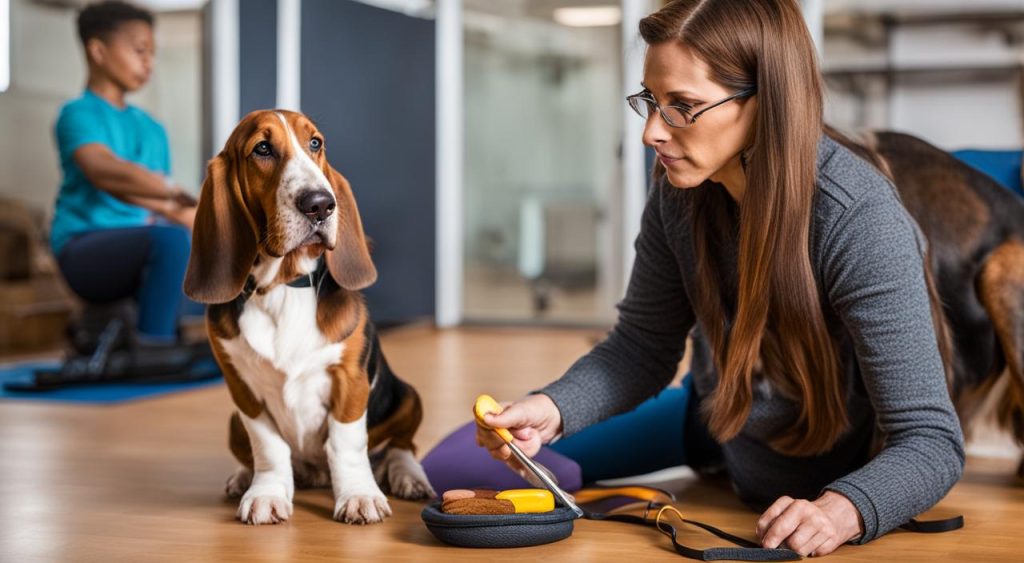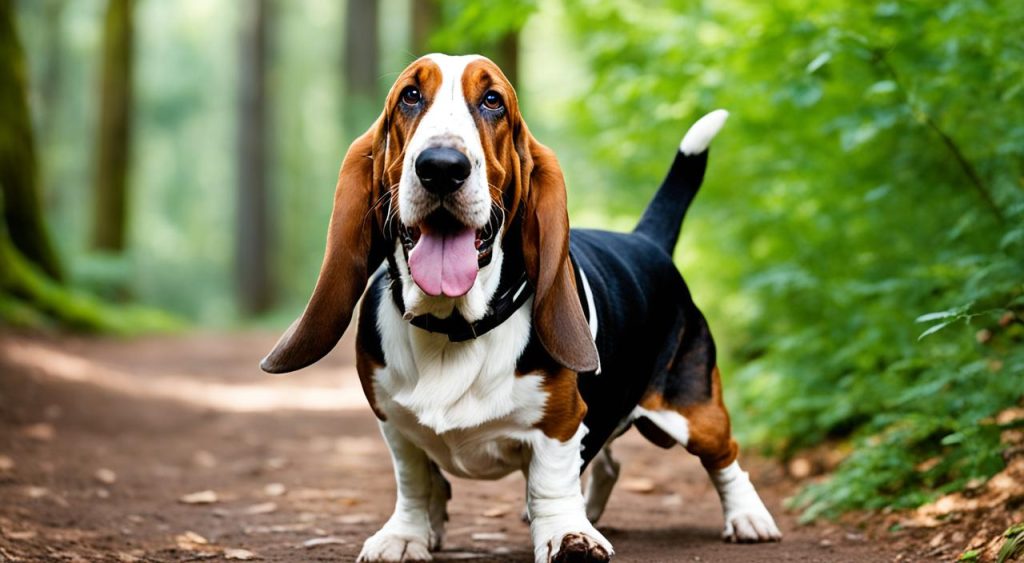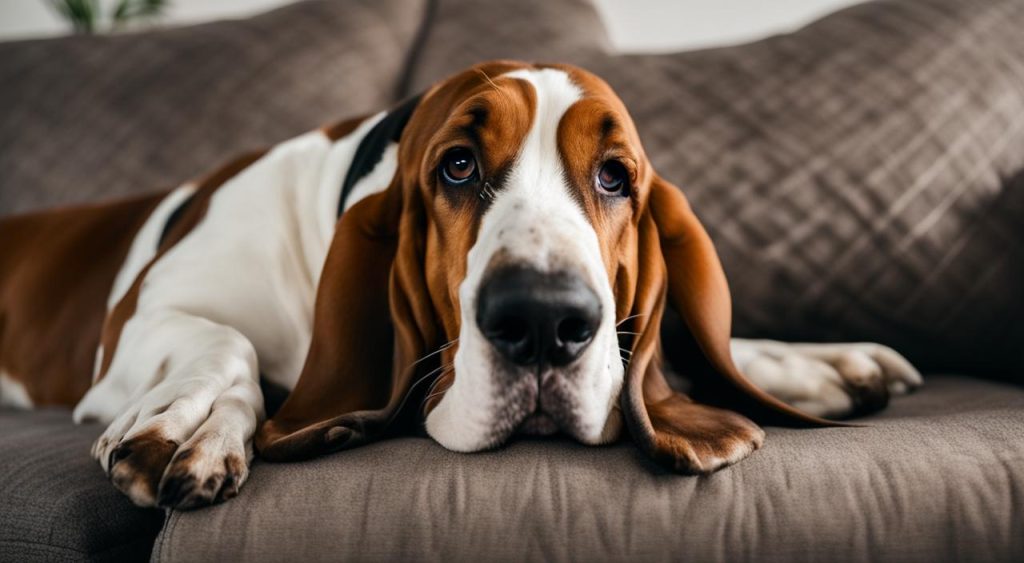Basset Hounds are known for their adorable and amusing behavior called splooting. Splooting refers to the position where a dog stretches out their hind legs behind them while laying down. This uniquely charming behavior has gained popularity on social media. But why do Basset Hounds sploot? Let’s explore the reasons behind this leg-splaying behavior.
Key Takeaways:
- Basset Hounds sploot by stretching out their hind legs while lying down.
- Splooting is a comfortable and relaxing position for Basset Hounds.
- Basset Hound anatomy, with their low-slung stature and elongated bodies, makes it easier for them to sploot.
- Splooting can serve as a form of communication and body language for Basset Hounds.
- While splooting is generally harmless, excessive splooting or signs of discomfort may require veterinary attention.
Basset Hound Anatomy and Stretching
Basset Hounds have a unique anatomy that contributes to their splooting behavior. Their low-slung stature and elongated bodies make it easier for them to stretch out their legs.
The splooting position allows Basset Hounds to stretch their hip muscles and relax their muscles after physical activity.
It can also help relieve pressure on their lower back and hips, which is beneficial for dogs prone to joint discomfort. The stretch provides a full-body stretch and allows them to cool off by exposing more skin to the air.
Comfort and Relaxation
Dogs sploot because it feels good to them. The splooting position is comfortable and relaxing for Basset Hounds.
It allows them to find the most comfortable position while sitting or lying down. Splooting also provides a full-body stretch, which can be beneficial for their overall well-being.
Splooting is like their version of yoga, helping them release tension and unwind.
Additionally, splooting can help cool their body temperature by pressing their belly to the ground, especially on cool surfaces like tile or wood floors.
In the basset hound resting position, they can fully relax and let go of any stress or discomfort they may be feeling.
Communication and Body Language
Splooting is not only a cute and amusing behavior, it also serves as a form of communication and body language for Basset Hounds. When a dog sploots, it can indicate that they are confident and relaxed, as they are comfortable enough to expose their vulnerable belly and hindquarters. This position allows them to assert dominance and show ownership of their surroundings by spreading out and taking up more space. It’s their way of saying, “I’m in charge here.”
Basset Hound Health and Splooting
Basset Hounds have a unique anatomy that can predispose them to certain health conditions, particularly related to their legs and joints. Although splooting itself is generally not indicative of health problems, it is important to be observant of any excessive splooting or signs of discomfort during splooting.
It is recommended to monitor your Basset Hound’s mobility and be attentive to any signs of joint discomfort. Regular exercise is essential for maintaining their overall joint health. Additionally, ensuring your Basset Hound maintains a healthy weight can help alleviate unnecessary stress on their legs and joints.
If you notice any concerning changes in your Basset Hound’s splooting behavior or joint health, it is best to consult with your veterinarian. They can provide guidance and recommend joint support supplements if necessary.
By being proactive in caring for your Basset Hound’s health, you can help promote their overall well-being and ensure they enjoy their splooting adventures for years to come.
Splooting in Other Breeds
While Basset Hounds are commonly associated with splooting, this endearing behavior is not limited to them alone. Other dog breeds and even cats can also engage in splooting.
Breeds with short legs and long bodies, such as Corgis, Dachshunds, and other brachycephalic or thick-coated dogs, are more likely to sploot. These breeds share similarities in their anatomy and body proportions, making the splooting position more comfortable for them.
The splooting position helps relieve pressure on the spines and hips of these breeds, providing a good stretch and overall comfort. It allows them to fully extend their hind legs and relax their muscles.
So, if you come across a Corgi or a Dachshund splooting, rest assured that they are simply enjoying a moment of relaxation and pleasure, just like Basset Hounds.
Conclusion
Splooting is a natural and harmless behavior for Basset Hounds and other breeds. It allows them to find comfort, relaxation, and a good stretch. Most dogs sploot simply because they enjoy it. This endearing quirk adds to the lovable and entertaining nature of Basset Hounds and other splooting breeds.
While excessive splooting or signs of discomfort during splooting may require veterinary attention, it is important to remember that splooting itself is not indicative of health problems. It is a normal expression of their flexibility and unique anatomy.
Next time you see your Basset Hound splooting, remember that they are not only taking a moment to stretch and cool off, but also expressing their contentment and relaxation. Embrace their adorable leg-splaying behavior and appreciate the many benefits of the Basset Hound sploot.





